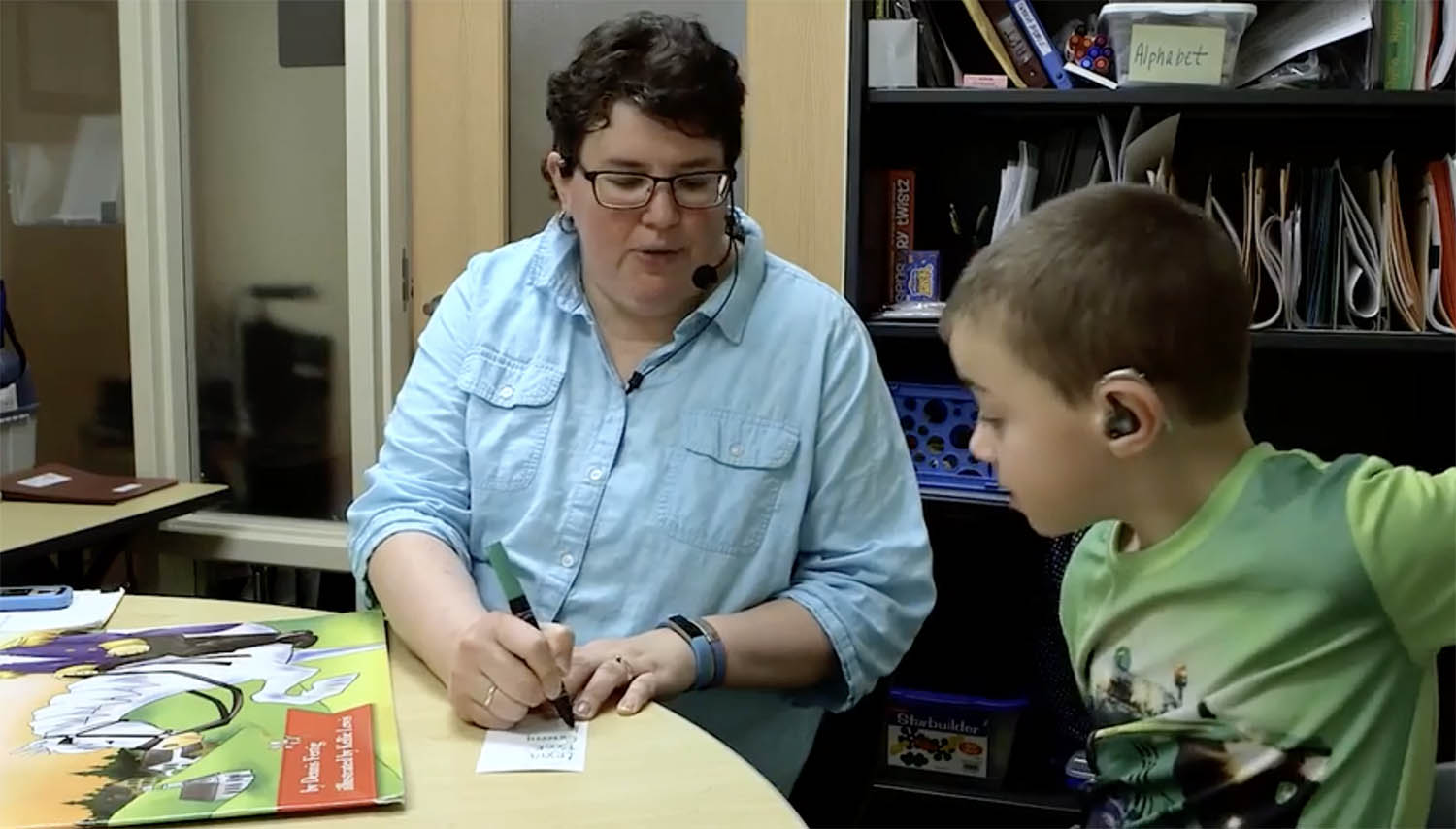Educational Service Guidelines for the Students who are Deaf and Hard of Hearing
Standard 9: Specialized Services, Materials, and Equipment
Standard 9: Specialized Services, Materials, and Equipment
The assessment report identifies the unique learning needs of the student related to and impacted by the hearing loss, including needs for specialized services, materials, equipment, and accommodations for the educational environment.Ohio Operating Standards for Students with Disabilities: 3301-51-06 (E)(3)(f)(g)

The assessment report identifies the unique educational needs of the student in order to have access to an appropriate education program. The IFSP/IEP/504 Plan team must identify the specialized instruction required, including, but not limited to:
- Teacher of the Deaf instruction
- Small group
- Direct instruction
- Controlled language and/or pacing
- Language
- Reading
- Math
- Speech
- Auditory skill development
- Sign language instruction
- Social
- Behavior
- Advocacy
- Training in assistive technology devices
The specialized support services required, including, but not limited to:
- Teacher of the Deaf
- Sign language interpreting
- Language facilitator
- C-Print captionist
- Deaf Mentor (ASL language model, self-advocacy, Deaf Cultural study)
- ASL class (direct instruction or online)
- Oral or cued speech transliteration
- Language facilitator
- Counselor
- Notetaker/Scribe
- Speech-to-text services
The specialized equipment required, including, but not limited to:
- Hearing assistive technology
- C-Print or TypeWell notetaking system
- Closed-captioned television
- Communication technologies for the deaf
- Captioned videos
- Augmentative and alternative communication (AAC)
Accommodations to the educational environment, including, but not limited to:
- Acoustically appropriate classroom
- Elimination of visual distractions
- Strategic seating
- Lighting
Assessment of Classroom Acoustics
Excessive noise and high reverberation levels interfere with the communication skills of many students who are D/HH. Classroom acoustic standards were developed by the American National Standards Institute, Inc. The standards dictate an ambient noise level of 35 dB and a .6 second reverberation time for typical classrooms. Provision is made for reducing the reverberation time to .3 for children with special listening needs. Relocatable classrooms are generally not suitable for any child with special listening requirements due to higher allowable noise levels until 2017.
When screening classroom acoustics, an audiologist or TOD should use a sound level meter with an “A” weighted scale that has a minimum setting of at least 35 dB. (ANSI Classroom Acoustical Screening Survey Worksheet) Most noise problems will be caused by:
- Excessively loud heating/ventilation/air conditioning units (HVAC)
- Other noise sources in the classroom including lights, audio visual (AV) and electronic equipment, computers, pencil sharpeners, aquariums, and children moving about the room and talking
- Street and playground noise from outside the building
- Hallway and adjacent classroom noise
High reverberation times can be the result of insufficient sound absorption materials in the ceiling, floor, and wall surfaces causing excessive sound reflections that reduce speech intelligibility. Reverberation time can be estimated using a formula approach or with a software program that calculates actual reverberation. Based on room size and reverberation time, the critical distance between the student and the talker can be calculated. When this distance is exceeded, speech intelligibility is reduced due to the increased reflections of sound.